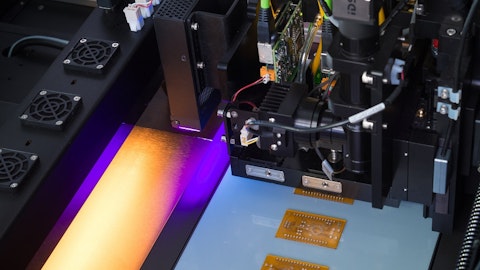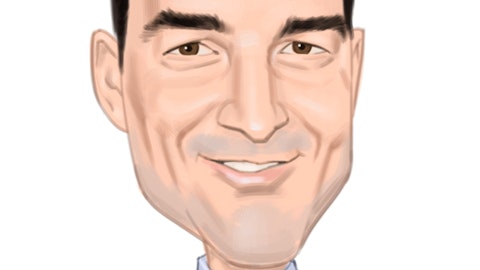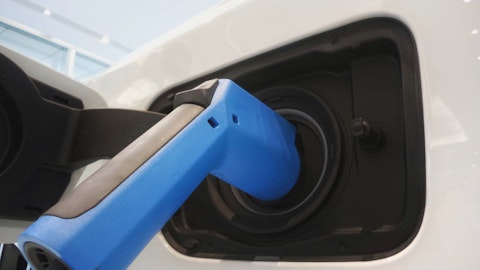Unidentified Analyst: I see. That’s great. And then which of your businesses do you see the most potential for share gains and new product introduction versus volumes that are driven primarily by cyclical recoveries?
Lori Koch: Yes. I mean I think, if we see – if we take it by segment within E&I, we’ve mentioned that – we should see 200 to 300 basis points of outsized market growth within semi, and that’s a combination of share gain and just where our exposure is in advanced nodes in the areas that are growing faster than others. We also see a step-change opportunity within the general consumer electronics space. We have seen some nice share gain on the metallization side. It will continue to show in the top line as the PCB providers start to ramp up their utilization rates to more normal levels, but we have seen we have seen our performance versus some of the peers in the metallization space, be better. And then within the W&P portfolio, we continue to expect nice growth within water.
Obviously, we’re in a destock right now, but we’ll see nice growth more from a secular basis. So just that water industry is generally growing in mid-single digits, which is a nice market for us. And on the safety side, it’s really going to be we’ve added capacity now, and we have to – we’ll get step-change growth from utilizing that capacity. So we’re nearing the completion of an additional line for Tyvek. We’ve constrained in the Tyvek market for years. And so we’ll – we’ll see some nice lift there as we fill up that asset, and we’ve recently expanded some capacity within the new technology in the Kevlar space. So it’s a new opportunity for us to bring a lighter weight Kevlar to the market, and we look for good things from that business as well.
I mean, and Shelter generally should be more along the GDP-type grower.
Unidentified Analyst: Understood. Thank you.
Lori Koch: Thanks.
Operator: And our final question today comes from the line of Arun Viswanathan of RBC Capital Markets. Your line is open.
Arun Viswanathan: Thanks for taking my question. Hey, just wanted to take a quick try it at maybe kind of mid-cycle or longer-term earnings growth. If you think about volumes kind of maybe double-digits below normal in electronics and then some leverage on a recovery there, you’re exiting the year at around $3 billion of annualized EBITDA. Would that imply something in the 3.3 to 3.6 kind of range as far as when you take a look at longer term or mid-cycle where you want to get to? Thanks.
Lori Koch: Yes. I mean longer term, you should get back into the – if we were running the E&I portfolio, I think, is where your focus was in the more of the 32% margin range, and we should see the volume kind of return there over time as the utilization rate at the large PCP guys and the semi guys return. But if we look more near-term as far as headwinds, tailwinds as we head into 2024, there’s definitely tailwinds from volume growth from the electronics recovery and normalization of the destock. And there’s obviously, incremental tailwinds from the deflation we had mentioned as we go forward, and then the benefit of the restructuring actions that we are now taking and we’ll start to see the benefit of at some point later in the first quarter.
And then just from an EPS perspective, we do continue to lower our share count. So we’ll see lower fourth quarter share count versus the full year, which will carry us into 2024. And then we’ll have the incremental benefit of the $2 billion program that we’ll complete in the first and then advance shares new share takeout as well. So we see a nice EPS benefit that we’ve seen as we took shares out throughout 2023. The headwinds, though, are, I think we will continue to see the industrial destock impact the water and safety businesses primarily in the first quarter. So that will be a headwind to the first quarter. We will see most likely some price modernization or get back primarily in the shelter business as I had mentioned. So we’ll try and maintain that as long as we can, but we will be cognizant of potential share loss and potentially has to be giving some back there.
And then just we have taken some aggressive actions on the compensation side in 2023. So we are paying a below-target variable compensation payout this year, and so we would most likely see normalization of that as we head into 2024. And so those are the big puts and takes with the one extra exception from a below-the-line perspective around interest income. So we did see about $145 million of interest income this year just as we held the proceeds from the Celanese transaction in the first half before we could deploy them to Spectrum and then the full share repurchase program. So we would see a step down in 2024 from interest income from about $145 million this year to probably $20 million next year.
Arun Viswanathan: Thanks.
Operator: I would like to hand the call back over to Chris Mecray for closing comments.
Chris Mecray: Okay. Thank you all for joining our call this morning. And for your reference, a copy of our transcript will be posted on our website. This concludes our call. Thank you.
Operator: That does conclude our conference for today. Thank you for participating. You may now all disconnect.
Follow Dupont (Old Filings) (NYSE:DD)
Follow Dupont (Old Filings) (NYSE:DD)
Receive real-time insider trading and news alerts





